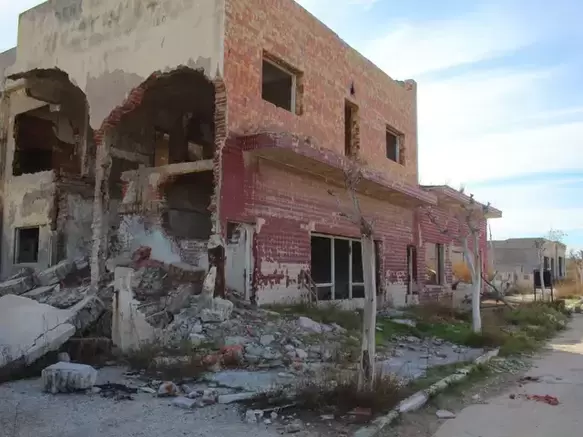Flooded Epecuen Emerges After Some 30 Years
By James Donahue
The once popular tourist town, Villa Epecuen, located on the eastern shore of Laguna Epecuen, Argentina, disappeared under 33 feet of water after torrential rains flooded Lake Epecuen and a seiche caused protective dike surrounding the community to fail. This happened on November 10, 1985.
The town’s estimated 1,500 inhabitants fled, most of them to nearby Carhue, where they rebuilt their homes and their lives. The flooding came on them so fast the people left most of their personal belongings behind.
Now, because of changing world weather patterns, the lake water has been slowly receding and the remains of Epecuen have reappeared. It is a ruined ghost town, so eerie that it has again become a strange tourist attraction just the way it stands.
In its heyday, Epecuen offered about 280 businesses that included hotels, lodges, guest houses, public baths and other novelties designed to capture the tourist’s money. The town had accommodations for up to 5,000 visitors.
The big attraction was the salt water from Laguna Epecuen. They said it is about twice as salty as the ocean, so people could literally float on it. The salt water was promoted for its therapeutic properties.
The Ferrocarril Sarmiento Railroad carried passengers from Buenos Aires to Epecuen and the Midland and Southern Railway carried passengers to nearby Carhue.
There is a single resident still living in Epecuen. He is Pablo Novak, 82, who moved back into his home after the waters first receded.
In a short documentary film, Novak said he saw the flooding as a natural phenomenon that probably happens regularly. The town built a dam that everybody thought would hold back the water if such an event happened. The dyke failed, however.
There isn’t much left of the town today. After 25 years, the salt water took its toll on just about everything. Even the cars are nothing but rusted pieces of junk.
"Whoever passes nearby cannot go without coming to visit here," Novak said. "It’s getting more people to the area. They come to see the ruins."
Thus the old tourist trap has inadvertently emerged to again be a tourist trap of another kind.
By James Donahue
The once popular tourist town, Villa Epecuen, located on the eastern shore of Laguna Epecuen, Argentina, disappeared under 33 feet of water after torrential rains flooded Lake Epecuen and a seiche caused protective dike surrounding the community to fail. This happened on November 10, 1985.
The town’s estimated 1,500 inhabitants fled, most of them to nearby Carhue, where they rebuilt their homes and their lives. The flooding came on them so fast the people left most of their personal belongings behind.
Now, because of changing world weather patterns, the lake water has been slowly receding and the remains of Epecuen have reappeared. It is a ruined ghost town, so eerie that it has again become a strange tourist attraction just the way it stands.
In its heyday, Epecuen offered about 280 businesses that included hotels, lodges, guest houses, public baths and other novelties designed to capture the tourist’s money. The town had accommodations for up to 5,000 visitors.
The big attraction was the salt water from Laguna Epecuen. They said it is about twice as salty as the ocean, so people could literally float on it. The salt water was promoted for its therapeutic properties.
The Ferrocarril Sarmiento Railroad carried passengers from Buenos Aires to Epecuen and the Midland and Southern Railway carried passengers to nearby Carhue.
There is a single resident still living in Epecuen. He is Pablo Novak, 82, who moved back into his home after the waters first receded.
In a short documentary film, Novak said he saw the flooding as a natural phenomenon that probably happens regularly. The town built a dam that everybody thought would hold back the water if such an event happened. The dyke failed, however.
There isn’t much left of the town today. After 25 years, the salt water took its toll on just about everything. Even the cars are nothing but rusted pieces of junk.
"Whoever passes nearby cannot go without coming to visit here," Novak said. "It’s getting more people to the area. They come to see the ruins."
Thus the old tourist trap has inadvertently emerged to again be a tourist trap of another kind.
